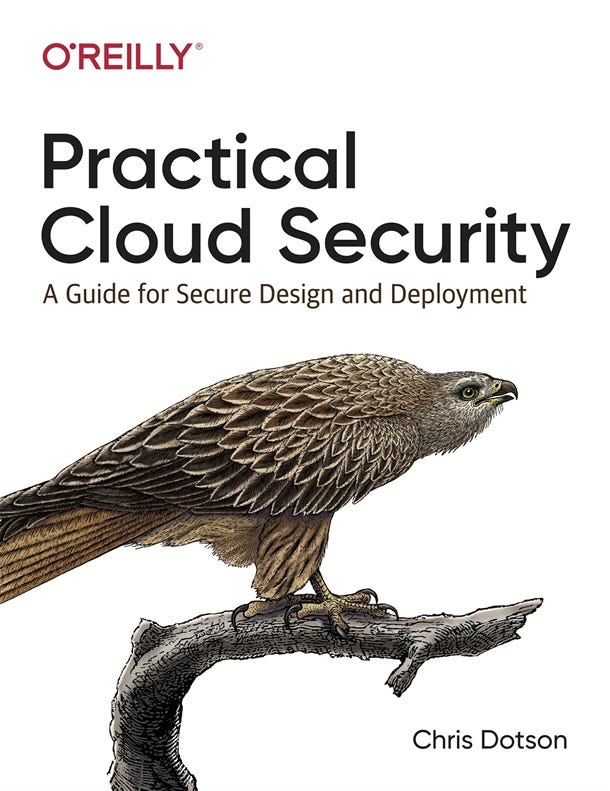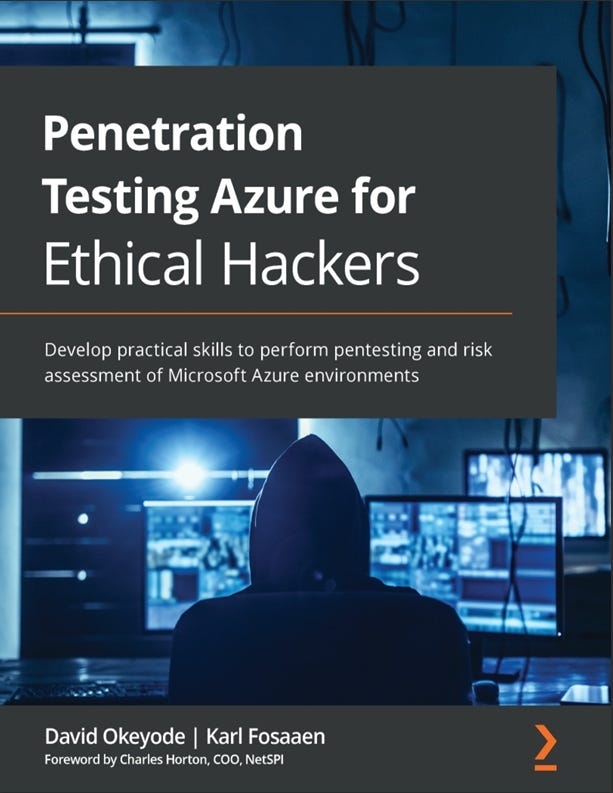Mastering the Offensive Cloud: Key Learning Modules Every Cybersecurity Pro Needs
Understanding offensive security techniques within cloud environments is essential for cybersecurity professionals. Here, we explore key modules in the Offensive Cloud Learning Path, outlining techniques and tools for effectively conducting penetration testing in cloud settings.

1. Public Cloud Reconnaissance — External Probing
Objective: To gather information about a public cloud environment that can be exploited in subsequent attacks.
Techniques: External probing involves identifying public-facing services and assets within the cloud. This includes scanning for open ports, exposed APIs, and misconfigured resources.
Tools:
- CloudSploit: Helps identify security risks in cloud accounts and infrastructure.
- Prowler: An open-source security tool that performs AWS security assessments.
Practical Example: A security tester might use CloudSploit to scan an AWS account for misconfigured S3 buckets. If a bucket is publicly accessible, it can expose sensitive data.
Defense Considerations: Regularly audit cloud assets and implement network segmentation to limit exposure. Use IAM policies to restrict public access to sensitive resources.
2. Attacking CI/CD: Leaked Secrets to Poisoned Pipeline
Objective: To exploit vulnerabilities in the CI/CD pipeline by accessing sensitive information.
Techniques: Attackers can extract secrets (like API keys) from configuration files or environment variables and use them to compromise the pipeline or deploy malicious code.
Tools:
- TruffleHog: A tool that scans git repositories for high-entropy strings, which may indicate leaked secrets.
- CodeQL: A code analysis tool that can detect vulnerabilities in source code, including hardcoded secrets.
Practical Example: An attacker might utilize TruffleHog on a public GitHub repository to find hardcoded API keys, then use those keys to gain unauthorized access to cloud resources.
Defense Considerations: Implement secret management solutions, such as AWS Secrets Manager or HashiCorp Vault, to securely manage sensitive information. Enforce policies that prohibit hardcoding secrets in code.
3. Attacking CI/CD: Dependency Chain Abuse
Objective: To manipulate third-party dependencies in the CI/CD process to introduce vulnerabilities.
Techniques: Attackers can compromise libraries and dependencies used in a project to insert malicious code or exploit software supply chain vulnerabilities.
Tools:
- Snyk: A tool that identifies vulnerabilities in open-source dependencies and provides remediation guidance.
- Dependabot: A GitHub feature that automatically checks for outdated or vulnerable dependencies.
Practical Example: An attacker could exploit a known vulnerability in a popular npm package used in a CI/CD pipeline to introduce malware into production applications.
Defense Considerations: Regularly update dependencies and conduct dependency audits using tools like Snyk. Implement monitoring to detect unusual behavior in applications.
4. Cloud Reconnaissance — Post-Compromise — IAM
Objective: To enumerate IAM roles and policies after gaining initial access to understand privilege levels.
Techniques: Post-compromise reconnaissance involves analyzing IAM configurations to find overly permissive roles or users that can be exploited for lateral movement.
Tools:
- AWS IAM Roles Scanner: A tool that helps identify and assess IAM roles and their permissions.
- Pacu: An open-source AWS exploitation framework that allows users to enumerate and attack AWS IAM roles and policies.
Practical Example: After breaching a cloud environment, an attacker uses Pacu to enumerate IAM roles, discovering a role with full administrative privileges assigned to a less secure application.
Defense Considerations: Implement the principle of least privilege by regularly reviewing IAM roles and policies. Use automated tools to detect and remediate overly permissive IAM roles.
5. Attacking CI/CD: Insufficient Flow Control
Objective: To exploit flaws in the flow of data within the CI/CD pipeline.
Techniques: Attackers can exploit misconfigurations that allow unauthorized access to sensitive stages of the pipeline, like production deployment.
Tools:
- OWASP ZAP: A popular open-source web application security scanner that can help identify vulnerabilities in CI/CD tools.
- Burp Suite: A comprehensive platform for web application security testing that can be used to inspect traffic within CI/CD pipelines.
Practical Example: An attacker could manipulate the CI/CD pipeline by exploiting insufficient flow control, allowing unauthorized code deployment to production environments.
Defense Considerations: Implement strict access controls and logging within CI/CD tools. Regularly review deployment pipelines to ensure appropriate flow control measures are in place.
6. Container Escapes: Information Gathering, Host Interaction, Sensitive Data Exposure
Objective: To exploit vulnerabilities in containerized environments to escape and interact with the host.
Techniques: Attackers can gather information about the host system or other containers, potentially leading to sensitive data exposure or full host compromise.
Tools:
- Kube-hunter: A tool that identifies vulnerabilities in Kubernetes clusters.
- Docker Bench for Security: A script that checks for dozens of common best practices around deploying Docker containers.
Practical Example: An attacker gains access to a compromised container and uses it to query the host’s Docker socket, allowing them to gain access to other containers or even escalate privileges to the host.
Defense Considerations: Regularly audit container configurations and implement least privilege access controls for containers. Utilize tools like Docker Bench to evaluate security best practices.
Top recourses for cloud security in 2024:
📘 Book 1: Practical Cloud Security
- Master the essentials of cloud security design, deployment, and monitoring.
- Explore identity management, access control, and network security fundamentals across cloud infrastructures.
- Learn practical methods for securing cloud assets against common vulnerabilities.

📘 Book 2: How to Hack Like a Ghost — Breaching the Cloud
- Dive into advanced attack methods and tactics for breaching cloud infrastructures, told from an attacker’s perspective.
- Follow step-by-step guides on exploiting cloud misconfigurations and gaining covert access.
- Gain a unique viewpoint on cloud penetration tactics to stay one step ahead.

📘 Book 3: Pentesting Azure Applications
- Discover practical techniques for pentesting Azure environments, from storage and virtual machine vulnerabilities to network flaws.
- Master essential skills in using PowerShell and Azure CLI for reconnaissance and exploitation.
- Learn how to protect critical Azure resources with actionable mitigation strategies.

📘 Book 4: AWS Penetration Testing
- Delve into the fundamentals of AWS pentesting, including IAM, EC2, S3, and more.
- Use industry-standard tools like Pacu and Boto3 to identify weaknesses and simulate real attacks.
- Build a solid foundation in AWS security to secure your cloud projects.

📘 Book 5: Hands-On AWS Penetration Testing with Kali
- Explore hands-on techniques to set up a Kali Linux environment on AWS for in-depth penetration testing.
- Learn vulnerability scanning, exploitation, and post-exploitation tactics tailored for AWS.
- Test your skills in real-world AWS environments with detailed exercises and examples.

📘 Book 6: Penetration Testing Azure for Ethical Hackers
- Focus on Azure-specific pentesting techniques to identify vulnerabilities and secure configurations.
- Use both automated tools and manual testing methods for maximum impact.
- Understand Azure’s unique security model and how to defend it against advanced threats.

📘 Book 7: Hacking Kubernetes — Threat-Driven Analysis
- Gain a deep understanding of Kubernetes security and discover vulnerabilities in containerized applications.
- Learn threat analysis techniques specifically for Kubernetes deployments on the cloud.
- Master security practices to protect containerized apps from potential exploits and attacks.

📘 Book 8: Cloud Penetration Testing for Red Teamers
- This guide for Red Teamers covers cloud pentesting across AWS, Azure, and GCP with practical tactics.
- Identify, exploit, and secure cloud infrastructure vulnerabilities in multi-cloud environments.
- Build effective Red Team strategies tailored for cloud-native threats.

📘 Book 9: Building and Automating Penetration Testing Labs in the Cloud
- Learn to build fully automated, scalable pentesting labs using cloud infrastructure.
- Get hands-on with lab setups for testing various security configurations and pentesting skills.
- Perfect for continuous learning and testing real-world scenarios in a safe, controlled environment.

Comments
Post a Comment